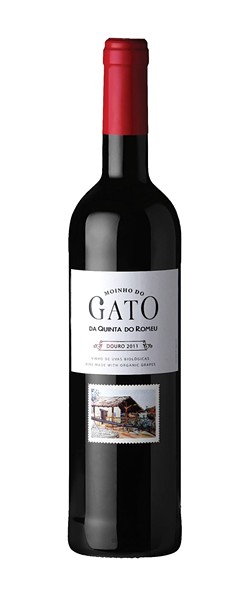
As was the case with wine from Spain over the last couple of decades, table wines from Portugal—especially red ones—are beginning to attract the attention they deserve. Some have become darlings of wine experts and restaurateurs, undoubtedly in part because they tend to be very economical. Since the 1990s, wines from Portugal have dramatically improved, and are some of the best values in European wines. You can enjoy great Portuguese table wines for well under $20, and some priced at half that. Indeed, the most expensive non-Port red wine from Portugal in our state that I'm aware of sells for $39.99, and it's sensational. But, more about that later.
Portuguese red wines are almost always blends of many different varietals—most of which are found only in Portugal. So, unless you've really boned up on your Portuguese wine grapes—and there are more than 230 of them—you might not even recognize some of the most familiar, like Periquita, Baga, Bastardo, Jaén, Alfrocheiro Preto and such. To add to the confusion—although the French seem to have adapted quite well to a similar system—Portuguese wines aren't identified by grape varieties, but rather by the regions from which those grapes come.
In terms of consistency and availability here in the United States, I would point you toward the red table wines from the Douro region of Portugal for great flavor and excellent value. The Douro, a geographic region situated in the northeast of Portugal, is most famous for its Port. Forebodingly steep hillsides, hotter-than-hell summers, rocky crevices and other environmental challenges make you wonder why anyone ever decided to try to make wine in the Douro, but they did. The result, however, is very hearty old vines—in some cases, ones that had to burrow as much as 60-65 feet deep through broken granite in order to find water.
A recent winemaker dinner at Finca restaurant, featuring the wines of Quinta do Romeu and winemaker João Menéres, provided the opportunity for me to sip some excellent reds from the Douro. The first was Quinta do Romeu Rosado 2015 ($11.44), a rosé that is made from organic, hand-picked grapes including Tinta Roriz (aka Tempranillo in Spain), Touriga Nacional and Tinto Cão. It's a light, refreshing, dry rosado that paired beautifully with chef Elloy Berumen's delicious three-way heirloom carrots (roasted, pickled and confit).
A charcuterie plate was paired with Quinta do Romeu Moinho do Gato 2012 ($10.49), which is fermented in stainless steel, with no oak, filtering or fining. Moinho do Gato is a vibrant, spicy wine with good acidity that is versatile enough to pair with a wide range of foods, especially meats and cheeses.
Quinta do Romeu Reserva ($20.40) is the Romeu estate's top red wine—one with floral aromas, firm structure, soft and silky mouthfeel—that hung right in there with stellar, French-racked wild venison. At slightly more than 20 bucks, I defy you to find a better European red wine bang-for-the-buck.
Remember I mentioned the most expensive Portuguese red table wine that I found available here? Well, it's called 2012 Quinta do Crasto "Old Vines" Reserva Douro and it sells for just under $40. It was given a 94-point rating in Wine Spectator and 93 points by Robert Parker's Wine Advocate, and I can taste why. It's powerful yet refined, and has great depth while still being elegant. Made with a field blend of between 20 and 30 different varietals, this Douro is brimming with ripe plum and floral aromas and sweet blueberry flavors. The tannins are quite light, and there's a strong backbone of acidity here. It's remarkable, even at such a young age. Get some.